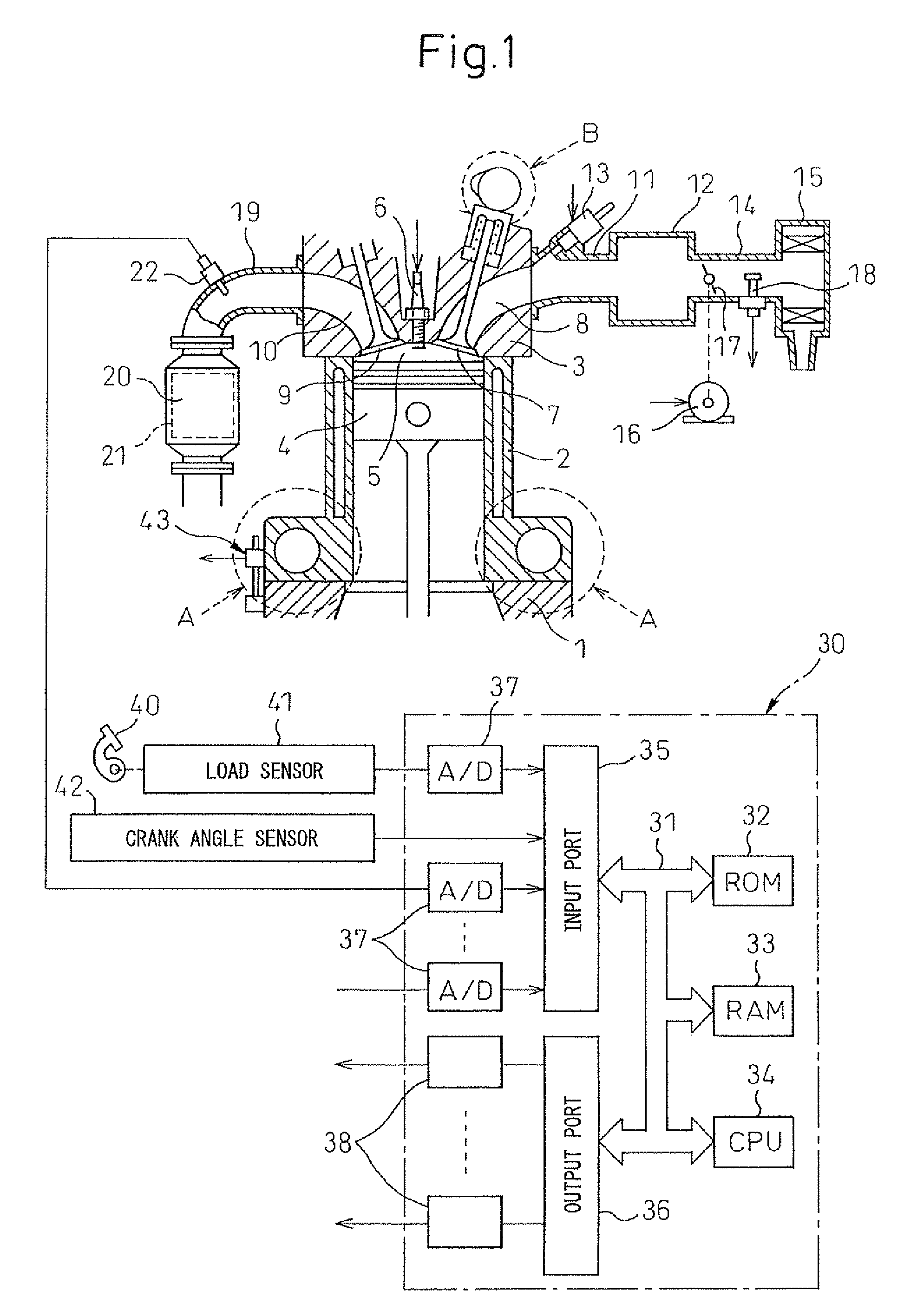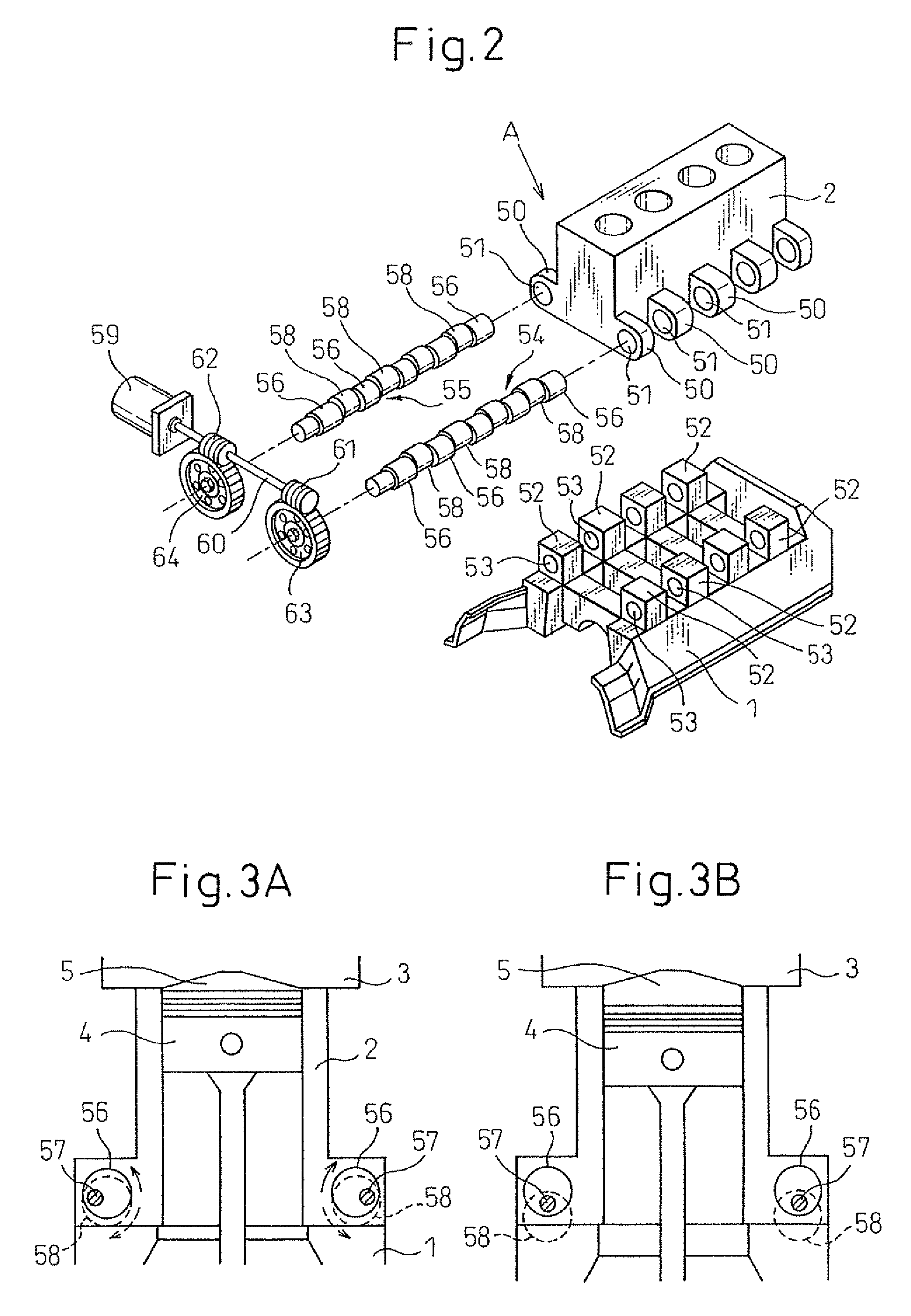Spark ignition type internal combustion engine
a technology of internal combustion engine and spark ignition, which is applied in the direction of machines/engines, electric control, instruments, etc., can solve the problems of reducing the purification rate of unburnt hc by no longer being able to rapidly raise the temperature of the exhaust purification catalyst, so as to suppress the deterioration of the exhaust emission and increase the fuel consumption efficiency
- Summary
- Abstract
- Description
- Claims
- Application Information
AI Technical Summary
Benefits of technology
Problems solved by technology
Method used
Image
Examples
first embodiment
[0094]Therefore, in the present invention, at the time of engine cold start, the superhigh expansion ratio cycle is not executed even at the time of the above-mentioned engine low load operation.
[0095]FIG. 10 is a view showing changes in the mechanical compression ratio, expansion ratio, closing timing of the intake valve 7, intake air amount, and opening degree of the throttle valve 17 in accordance with the engine load at the time of engine cold start. FIG. 10 shows only the region where the load is relatively low. Note that, the broken line in the figure shows the changes in the parameters when executing superhigh expansion ratio control executing a superhigh expansion ratio cycle at the time of engine low load operation. Further, in FIG. 10, the case of controlling the intake air amount by delaying the closing timing of the intake valve 7 as the engine load becomes lower is explained, but similar control is possible even when controlling the intake air amount by advancing the cl...
second embodiment
[0128]FIG. 14 is a flowchart showing the control routine of operational control of the internal combustion engine in a The illustrated control routine is performed by interruption every constant time interval.
[0129]As shown in FIG. 14, first, at step S20, in the same way as step S11 shown in FIG. 11, the operating state of the internal combustion engine is detected. Next, at step S21, it is judged if the internal combustion engine, in particular, the three-way catalyst 21, has finished warming up. At the time of engine cold start, it is judged that the internal combustion engine has not finished warming up, then the routine proceeds to step S22. At step S22, it is judged that the internal combustion engine has already been started. Before the internal combustion engine is started, the routine proceeds to step S23 where the temperature of the three-way catalyst 21 is detected. The temperature of the three-way catalyst 21 is detected right before engine start, so the temperature of t...
third embodiment
[0140]FIG. 16A and FIG. 16B are views showing the relationships between the temperature of the engine cooling water at the time of engine start and the mechanical compression ratio and between the temperature of the engine cooling water at the time of engine start and actual compression ratio. As shown in FIG. 16A, in the present embodiment, in the same way as the third embodiment, the lower the temperature of the engine cooling water at the time of engine start, the lower the mechanical compression ratio at the time of engine start is set. That is, the mechanical compression ratio at the time of engine start is made lower when the temperature of the engine cooling water at the time of engine start is low compared with when it is high.
[0141]Further, as shown by the solid line in FIG. 16B, in the present embodiment, in the temperature region where the temperature of the engine cooling water is higher than a reference temperature (hereinafter referred to as the “high temperature side ...
PUM
 Login to View More
Login to View More Abstract
Description
Claims
Application Information
 Login to View More
Login to View More - R&D
- Intellectual Property
- Life Sciences
- Materials
- Tech Scout
- Unparalleled Data Quality
- Higher Quality Content
- 60% Fewer Hallucinations
Browse by: Latest US Patents, China's latest patents, Technical Efficacy Thesaurus, Application Domain, Technology Topic, Popular Technical Reports.
© 2025 PatSnap. All rights reserved.Legal|Privacy policy|Modern Slavery Act Transparency Statement|Sitemap|About US| Contact US: help@patsnap.com



